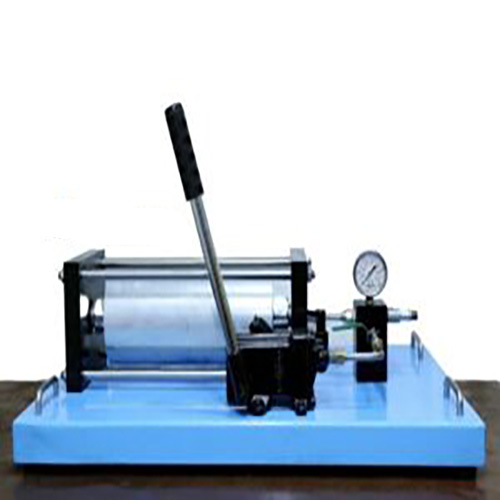SM-204 | Thick Wall Cylinder Apparatus
- Direct stresses and strains of a thick cylinder under internal pressure
- Cylinder with strain gauge application on surface and in wall
- Triaxial stress state in cylinder wall
- LxWxH: 700x350x330 mm
- Weight: approx. 32 kg
Description
Technical Specification
Media
In contrast to thin-walled vessels, when designing thick-walled vessels allowance must be made for an uneven distribution of stresses through the thickness of the wall. The stress state in a thick-walled vessel under internal pressure is triaxial. The direct stresses and strains occur: radial, circumferential, hoop and axial.
Strain gauges are employed to record the strains electrically and the stresses and strains are determined from those measurements. This apparatus experimental unit is used to investigate direct stresses and strains occurring on a thick-walled cylinder subjected to internal pressure. A pressure gauge indicates the internal pressure. An eccentric groove is cut between the two halves of the cylinder, in which the strain gauges are mounted at various radial points. Additional strain gauges are mounted on the inner and outer surfaces of the cylinder. Radial, hoop and axial strains are measured, enabling the strain state to be fully recorded.
Mohr’s circle for stress and strain analysis is used to represent the triaxial stress state in the cylinder wall graphically. The direct stresses and strains are calculated from the measured strains, applying the appropriate law of elasticity.
Aluminum cylinder
- length: 330mm
- diameter: Ø=140mm
- wall thickness: 50mm
- internal pressure: max. 7N/mm2(70bar)
Strain gauge application
- 11 strain gauges: half-bridges, 350 Ohm
- gauge factor: 2,00 ±1%
- supply voltage: 10V
Pressure gauge
- 0…100bar
- accuracy: class 1,0
Any questions? We are happy to help...
+49 40 670 854 - 0
sales@gunt.de
Newsletter
About Us
EduTech Lahore excels in designing and supplying cutting-edge equipment for Engineering Education in Mechanical, Polymer Chemical, Civil and Control Engineering. Focused on meeting the demand for quality education, we offer cost-effective solutions for the latest teaching equipment.
Contact Info
Head Office (Asia)
EduTech
Lahore
Regional Partner Office (UK)
Sales Partner (Middle East) GCC International FZC
Leave a Message
WhatsApp us

